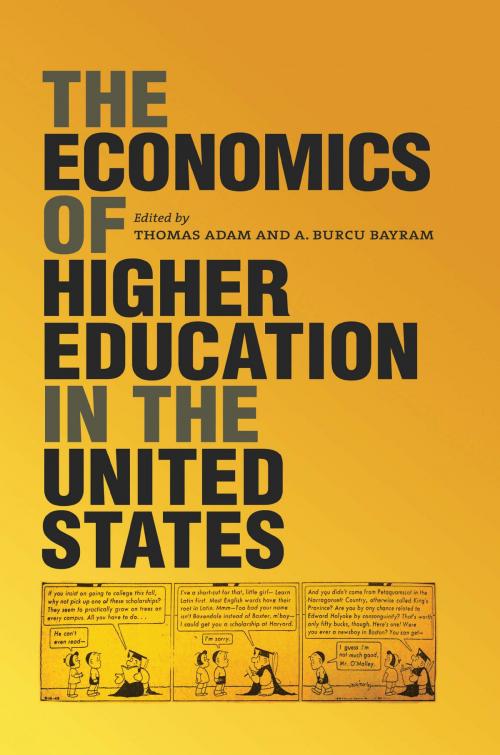The Economics of Higher Education in the United States
Business & Finance, Business Reference, Education, Nonfiction, Reference & Language, Education & Teaching, Higher Education, History, Americas, United States| Author: | Jordan Hensley, Stanley N. Katz, Bruce A. Kimball, Jeremy B. Luke, Sam Stern, Jamie M. Brown, David C. Hammack | ISBN: | 9781623497446 |
| Publisher: | Texas A&M University Press | Publication: | March 27, 2019 |
| Imprint: | Texas A&M University Press | Language: | English |
| Author: | Jordan Hensley, Stanley N. Katz, Bruce A. Kimball, Jeremy B. Luke, Sam Stern, Jamie M. Brown, David C. Hammack |
| ISBN: | 9781623497446 |
| Publisher: | Texas A&M University Press |
| Publication: | March 27, 2019 |
| Imprint: | Texas A&M University Press |
| Language: | English |
In The Economics of Higher Education in the United States, editors Thomas Adam and A. Burcu Bayram have assembled five essays, adapted from the fifty-second annual Walter Prescott Webb Memorial Lecture Series, that focus on the increasing cost of college—a topic that causes great anxiety among students, parents, faculty, administrators, legislators, and taxpayers. Essays focus on the funding of colleges, the funding of professional schools, and the provision of scholarships and student loans for undergraduate students to reveal the impact of money on the structure of institutions of higher education and the organization of colleges.
The cost of higher education has risen dramatically as both states and the federal government have significantly lowered their contributions to offset that cost. With rising tuition and cost of living—on top of a growing student population—too many graduates find themselves in financial trouble after earning their undergraduate degree. Mounting student debt prevents an increasing number of young professionals from embarking on the very life for which their education was supposed to prepare them. How have we come from a political environment in which higher education was perceived as a public good, normally free to the user, to an environment in which higher education is seen as a privilege subject primarily to market forces?
The Economics of Higher Education in the United States offers a desperately needed analysis in an attempt to understand and tackle this looming problem.
In The Economics of Higher Education in the United States, editors Thomas Adam and A. Burcu Bayram have assembled five essays, adapted from the fifty-second annual Walter Prescott Webb Memorial Lecture Series, that focus on the increasing cost of college—a topic that causes great anxiety among students, parents, faculty, administrators, legislators, and taxpayers. Essays focus on the funding of colleges, the funding of professional schools, and the provision of scholarships and student loans for undergraduate students to reveal the impact of money on the structure of institutions of higher education and the organization of colleges.
The cost of higher education has risen dramatically as both states and the federal government have significantly lowered their contributions to offset that cost. With rising tuition and cost of living—on top of a growing student population—too many graduates find themselves in financial trouble after earning their undergraduate degree. Mounting student debt prevents an increasing number of young professionals from embarking on the very life for which their education was supposed to prepare them. How have we come from a political environment in which higher education was perceived as a public good, normally free to the user, to an environment in which higher education is seen as a privilege subject primarily to market forces?
The Economics of Higher Education in the United States offers a desperately needed analysis in an attempt to understand and tackle this looming problem.















